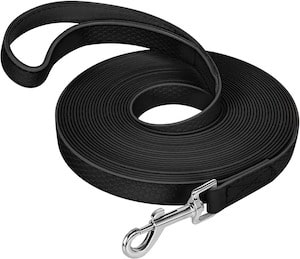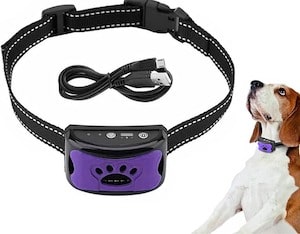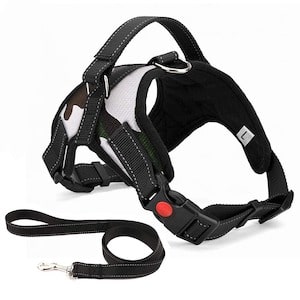You might have seen owners in the park using long ropes to train their pups. Well, those might not be the regular extensible leash or ‘Retractable Leash‘. They are training leads or in simpler words ‘Long-Line‘.
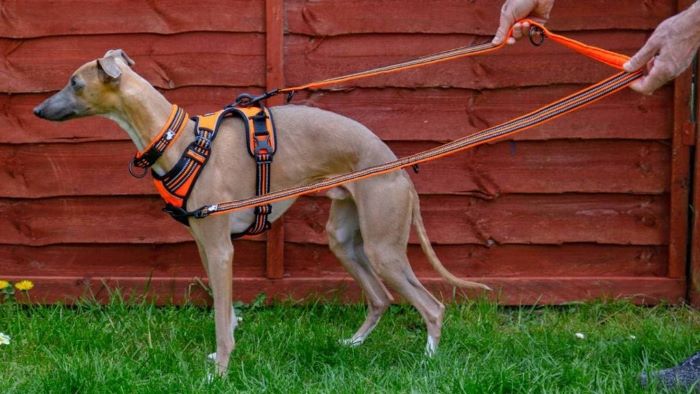
A long-line is a long rope with a clip at the end that you can attach to your dog’s harness like you would a normal lead. Training lead serves a variety of purposes other than recall training for a dog. Let’s dive deeper to know how it actually works!
You Might Also Like:
What Is a Training Lead?
The dog training lead is a long line with a regular clip fastener at one end. Dog training leads or long lines are important dog training and management tools.
A long-line training lead is a long rope with the same length and does not automatically lengthen or shorten. However, there are other leads available that you can easily adjust.
Training leads are much longer than traditional dog leads and come in lengths of 5 to 50 metres. This means that you can give your dog more freedom compared to a shorter leash. It is especially useful when dealing with dogs who need recall training.
Why Use Dog Training Leads?
While the long-line leads are specially used for recall training for your dog, there are other purposes too.
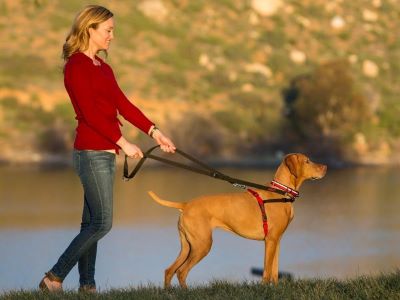
They can be:
- To practise recalls: The goal is to control the puppy at a young age and get the pup used to coming back when called. This training gives you more control over your pet. Unfortunately, adult dogs are often more difficult to train.
- For gundog training: Some breeds have a strong hunting instinct. These are called gundogs. They look up to everything as their prey and ignore the owner’s call. For these breeds, it is recommended to work toward this consistently from puppyhood.
- With a reactive dog: There are dogs who are unruly and do not obey. You can use training leads to train your dog. Consistent training gives you more control over your dog.
- To provide more freedom to the dog: The long leash helps you slowly adapt your dog to longer distances without letting him escape. It gives your dog more freedom while still being able to stop him in case of an emergency. It allows you to gradually intensify your training and build confidence.
What Length of Dog Training Lead Should I Buy?
The best length for a long-line totally varies for each individual. However, as a general rule, you should start with a 5 m long lead for your puppy. Starting with a comparatively short lead will help you train your puppy better in a small range.
But, you should also take care not to entangle the lead at once, this can trip your pup or drive him crazy and you will lose control over it.
After initial training lessons in a smaller radius, you can go for lead lengths of 10 m or more, according to the size of your puppy. It is necessary your puppy obeys your command. The initial training must be in a controlled environment to make sure the dog does not harm himself.
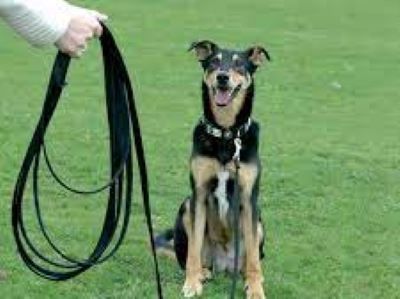
As a rule of thumb, the bigger and stronger your pet, the shorter the leash should be. It takes time to get used to a long lead.
Long leads can be difficult to handle as they end up tying in knots. Hence, you should always try not to untangle them to the fullest as well as keep a constant watch on your dog so they do not trip while running. You should also ensure that the lead has the proper length according to your pet’s weight and size.
For even more control during training, some owners use slip leads, which tighten around the dog’s neck when pulled. However, it’s important to know how to use a slip lead properly to avoid injuring the dog.
What Is the Best Material for a Training Lead?
The training leads are mainly available in three materials: Leather, Biothane and Nylon.
No matter what material you choose, make sure the lead is strong, tear-resistant and has a good grip. It is always advisable to wear gloves. This will prevent injuries.
Leather
Generally, greased leather is used for making training leads. It promises grip and flexibility. Greased leather does not tangle easily and also does not absorb much water or mud. Thus, it prevents the lead from getting heavy.
However, greased leather must be regularly treated with leather grease and cannot be washed. When treating grease, the dosage is important. If you use too much grease, the leash can easily slip out of your hand.
Biothane
Biothane material is tear-resistant, flexible and maintenance-free. This is a rubbery, waterproof material. It does not absorb water, like a nylon training lead. The mud falls off it and adhering dirt is easily rinsed off with water.
It does not get smelly if left in a bag or the car. As it has no fabric to snag, it catches less on twigs and branches and tends to trail behind the dog better.
The wipes are also available in signal colours. They are soft to the touch. But, it should be noted that some Biothane leashes are a bit more slippery.
Nylon
Long nylon leashes are also available in rubberized and non-rubberized versions. Leads are available in signal colours.
You may want to choose the rubberized version. They are lightweight, washable, and quick-drying. However, most are not water-repellent. Once they absorb water, they become quite heavy.
How to Use a Dog Training Lead?
There are certain points to follow while using the training lead.
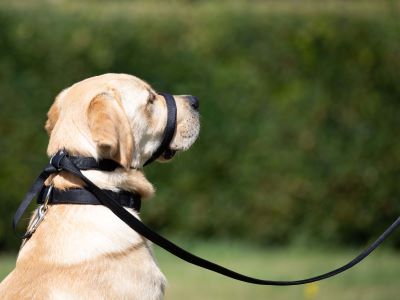
- Firstly, untangle the lead and make sure there are no knots
- Wrap the lead loosely around your hand. Never use your finger to do so. This could result in broken fingers. Wrapping around your hand allows you to easily let each loop go the further your dog moves away from you and loop the excess back up when they get closer.
- It is important that you attach the long-line to a harness and not a collar. If your dog runs when they’re at the very end of the line they’re less likely to hurt themselves.
- Hold the line with two hands. The hand closest to the dog will manage the line’s slack and can slow them down if needed. Your other hand holds the rest of the line and the handle if there is one.
- Be careful when trying to grab the line with your hands if your dog is running. You may suffer cuts and burns. Stay safe, drop it and use your feet to stand on it instead.
- With your first hand, you can let the line slide through while giving your dog more freedom. With your second hand, you can pull the line in if you need to shorten the distance or bring your dog towards you.
- This two-handed method also means you won’t stop your dog too harshly and you have less chance of dropping the line.
- Try to keep your line as slack as possible so your dog doesn’t feel tension through it. This will help achieve a good recall goal once the training is over.
While training leads are useful for recall training, a retractable dog lead can also be a good option to give your dog more freedom while maintaining control. Check out our recommendations for the best retractable dog lead uk.
FAQs
When is a long lead useful?
The long lead is particularly suitable for young dogs, unruly dogs, breeds with a strong hunting instinct and as a compromise for dogs that need to be walked on a leash.
What type of collar is suitable to fasten the lead?
In general, harnesses are preferable because they are much gentler than collars. Due to the better weight distribution of the harness, the neck vertebrae are relieved compared to the collar.
What is the best age to use a training lead for a dog?
Ten weeks old is a great age to start lead training a puppy, though you can start the process as early as four to six weeks of age. By this time, your puppy should be aware of when they need to go out to urinate or defecate. They should also understand when you’re happy with their good behaviour.
How long should dog training lead be?
A long line is a lead that is between 5m and 25m long. But, you should go with a 5-10m long line as it’s easier to handle than a 25m lead which will likely end up tying you up in knots!
Summary
In a nutshell, training leads are very beneficial to train your pups as well as grown up dogs. However, there are certain criteria to keep in mind while choosing a suitable lead for your dog.
Along with the recall training, there is much more you can do with the lead to train your furry companion.
In addition to choosing the length and material of your dog’s training lead, you can also select the color. Different colored leads have various meanings and uses. What Do Different Color Dog Leads Mean? is a good resource for more information.
